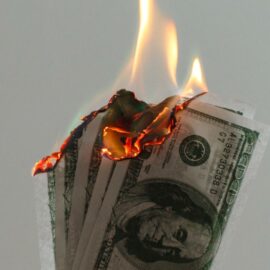

This article is an excerpt from the Shortform book guide to "Poor Charlie's Almanack" by Charles T. Munger. Shortform has the world's best summaries and analyses of books you should be reading.
Like this article? Sign up for a free trial here .
What is a passive investment strategy? Can passive investing outperform active trading?
A passive investment strategy involves buying select securities and holding onto them for the long-term with the hope of extracting maximum returns and avoiding the fees involved in active trading. Most passive investors buy index funds that mirror the stock market to ensure diversification. Long-term studies show that passive investing has consistently outperformed active trading because very few people can truly exploit the imperfections in the market.
Read on to learn more about the benefits of a passive investment strategy.
Why Passive Investing?
Despite their personal prowess in investing, Buffett and Munger are major proponents of the adoption of a passive investment strategy by the vast majority of the population, even for large endowment funds deciding what to do with their money. Specifically, passive investing means investing in the market overall through index funds, rather than choosing stocks personally or hiring money managers who do more than passive investing.
Consider the simple statistics of the matter. Of the entire investing population, strictly half of people will do better than average, and half of people will do worse. And the average result may actually be quite poor. If you were to aim for better results, note that only 10% of people can be in the top ten percentile.
This contravenes the presumptuous optimism of the retail investor or active professional investor, both of whom tend to think they are well above average. In reality, long-term studies that show most active investors earn less than the overall market confirm the benefits of a passive investment strategy.
Munger has special ire for active investment managers who take a percentage of the invested capital in fees. Even in the unlikely case that active investors beat the market, after deducting fees and transaction expenses, they underperform the market.
This might be counter-intuitive to the smart and confident. Surely a well-heeled foundation, with very strict hiring practices, pedigreed investors, and rigorous investment discussions, should do better than average? But these very practices might hurt, because they contribute to overconfidence.
Munger acknowledges that the market is not perfectly efficient, and that a small number of motivated, intelligent, disciplined investors will be able to find the rare opportunity among millions of false leads. But the percentage of people who can do this consistently over time is vanishingly small.

———End of Preview———
Like what you just read? Read the rest of the world's best book summary and analysis of Charles T. Munger's "Poor Charlie's Almanack" at Shortform .
Here's what you'll find in our full Poor Charlie's Almanack summary :
- A collection of Charlie Munger’s best advice given over 30 years
- Why you need to know what you’re good at and what you’re bad at to make decisions
- Descriptions of the 25 psychological biases that distort how you see the world






